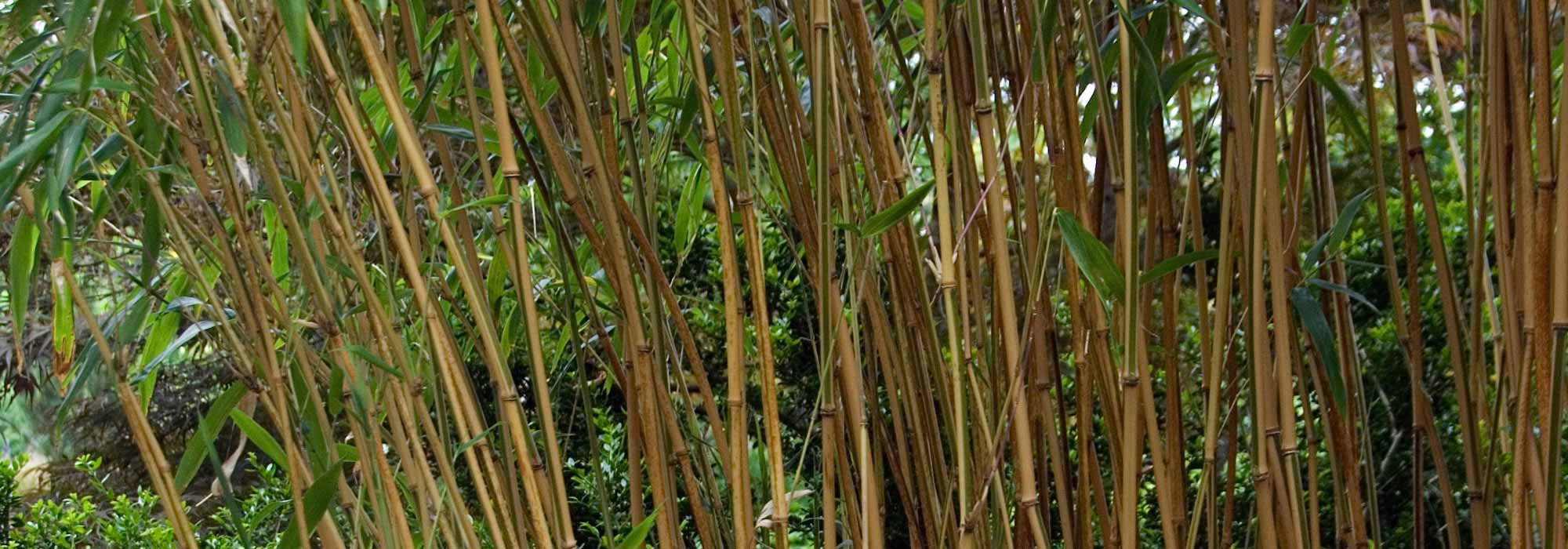
Semiarundinaria - Noble bamboo: planting and growing
Contents
Noble bamboo in a few words
- Semiarundinarias are bamboos with a narrow habit, reaching 3 to 10 metres depending on the species or variety.
- With slow growth, these bamboos can still form beautiful green screens.
- The stump is running in warm climates, but the average bamboo remains more restrained in cooler climates.
- Semiarundinaria tolerates full sun or partial shade.
- This type of bamboo prefers fresh, humus-bearing soil and can be grown in the ground or in containers.
The word from our expert
You either love them or hate them, but bamboos certainly don’t leave anyone indifferent. The Semiarundinaria, also known as Medium Bamboo or Noble Bamboo, is no exception, thanks to its almost purple culms that starkly contrast with its green leaves. In reality, the culms transition from purple when young, to polished green tinged with purple, and finally to a brown-orange hue in autumn.
But the appeal of the Noble Bamboo lies in its narrow, almost columnar habit. Add to this dense, evergreen foliage, and it becomes the ideal bamboo for shielding your garden from prying eyes when planted as a hedge, particularly the species Semiarundinaria fastuosa.
Semiarundinarias are medium-sized bamboos (ranging from 3 to 10 metres depending on the species and variety) and grow relatively slowly. Native to China and Japan, these bamboos are hardy enough to be grown almost anywhere, whether in the ground or even in pots. However, be cautious—in mild climates, the Medium Bamboo can be slightly invasive, much like the Phyllostachys, with which it shares genetic origins. Fortunately, the Semiarundinaria remains far more well-behaved in cooler climates.
Semiarundinarias thrive in both sunny and shaded exposures. They prefer cool, well-drained, and fairly rich soil, whether in large containers or directly in the ground.
Botany and description
Botanical data
- Latin name Semiarundinaria sp.
- Family Poaceae
- Common name Medium bamboo, noble bamboo
- Flowering insignificant and rare
- Height 3 to 10 m
- Exposure sun and partial shade
- Soil type clayey and fresh, neutral to acidic
- Hardiness -15°C
The genus Semiarundinaria (family Poaceae) comprises 7 species of bamboos, the most well-known and cultivated being Semiarundinaria fastuosa, Semiarundinaria yashadake, and Semiarundinaria makinoi. These bamboos, known as Medium Bamboos or Noble Bamboos, are native to China and Japan. According to botanists, the genus Semiarundinaria is believed to be a hybrid, with one parent likely from the genus Phyllostachys, from which it inherits its upright, almost columnar habit.
Semiarundinaria species are medium-sized bamboos (no taller than 10 m) with a moderate to slow growth rate. They are considered running bamboos, especially in warm climates. In cooler climates, Noble Bamboos tend to be far less invasive.
Noble Bamboos exhibit a compact, vertical, columnar habit, forming narrow columns 2 to 3 m wide. The culms are glossy, very straight, and cylindrical, with a beautiful medium green colour, streaked with purplish-brown, and measure 4 to 6 cm in diameter (2 cm in diameter for Semiarundinaria yashadake and Semiarundinaria makinoi). These culms develop beautiful purple hues as they age, particularly in sunlight, and turn orange in autumn. The culms can reach up to 10 m in height, depending on the species, and bear short branches along their entire length.
Each branch carries large, lanceolate, glossy green leaves, about 10 cm long. The foliage is evergreen (down to -15°C), dense, and flexible. The culm sheaths, pearly and shiny, are semi-evergreen, remaining attached to the culms for about 3 months before falling. These sheaths also provide a striking colour contrast between themselves, the purple culms, and the green leaves.
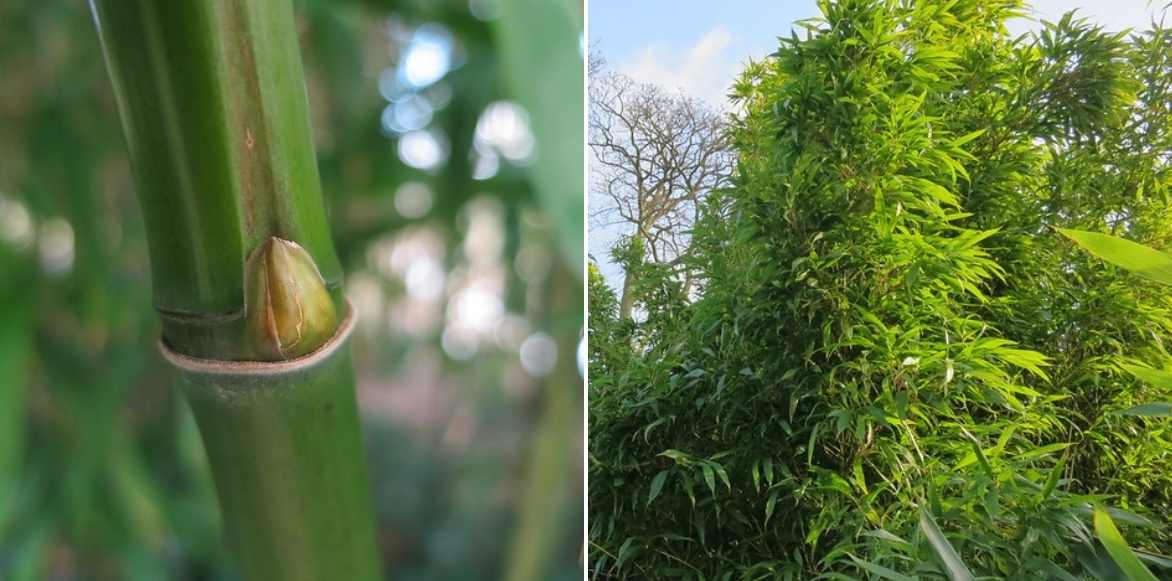
Semiarundinaria fastuosa, culm and silhouette on the right (© Leonora Enking)
As with all bamboos, the flowers, which are pseudo-spikelets, are insignificant and hidden by the foliage. They appear intermittently in fine, arching panicles. Generally, flowering is very rare. The development of an inflorescence leads to the death of the plant, with the culms drying out and dying after flowering.
Semiarundinaria species are typically used, due to their compact, columnar habit and dense evergreen foliage, to create a stunning green screen, block a view, or form a windbreak. Plant them 1 to 1.50 m apart. Noble Bamboo can also be planted as a standalone clump in the garden, alongside other bamboos or large trees with an Asian-inspired aesthetic (Japanese Maple, Cornus kousa, etc.).
Please note: Semiarundinaria fastuosa has been awarded the Award of Garden Merit by the Royal Horticultural Society (RHS) for its exceptional ornamental qualities.
The best varieties
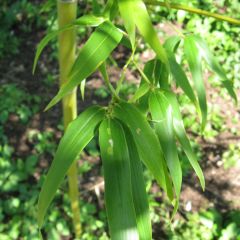
Semiarundinaria fastuosa - Medium-sized Bamboo
- Height at maturity 7 m
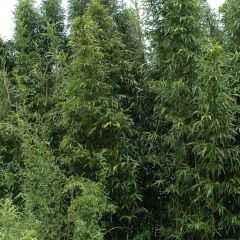
Semiarundinaria fastuosa var. viridis
- Height at maturity 6 m

Semiarundinaria yashadake f. kimmei
- Height at maturity 4,50 m
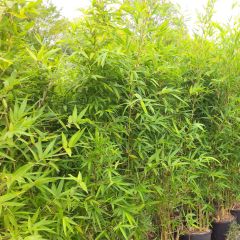
Semiarundinaria makinoi
- Height at maturity 3,50 m
Discover other Semiarundinaria
View all →Available in 3 sizes
Available in 1 sizes
Available in 1 sizes
Available in 1 sizes
How to plant Semiarundinaria?
Where to Plant?
Semiarundinarias are quite hardy and can be grown throughout France and Belgium. However, avoid planting them in a spot exposed to cold, dry winds.
Medium-sized bamboos thrive in partial shade, but tolerate full sun well.
Generally, bamboos, and Semiarundinarias are no exception, prefer a neutral or acidic soil, without excess lime, rather rich, moist, and well-drained. They appreciate slightly damp soil in summer but cannot tolerate having their roots in water during winter: a heavy, compact soil that becomes waterlogged in winter would lead to fatal rotting.
Caution! Semiarundinarias are running bamboos, especially in mild climates (much less so in cooler climates). You can limit the spread of their running rhizomes by defining their space from the outset with a root barrier made of polypropylene planted vertically in the ground around the young plant.
→ To learn more, read the guide: How to install a root barrier?
When to Plant?
The ideal time to plant Semiarundinarias is late summer and autumn, from late August to October, after the peak heat. Planting can also be done between March and April (after the last frosts) in regions north of the Loire or between September and November in regions south of it.
How to Plant?
Semiarundinarias can be grown either in the ground or in pots.
In the Ground
- In a wide and deep hole, install the root barrier to control the spread of running varieties. This barrier should protrude 5 cm above the soil;
- Place the bamboo rootball at the centre of the hole;
- Backfill with the excavated garden soil, adding a good planting compost and manure;
- Water with 10 litres at planting time: this helps eliminate any air pockets between the roots and the soil and ensures the roots are well moistened. Bamboos, in fact, need plenty of water to establish themselves: water very regularly in the first year after planting, especially in summer when the soil is very dry;
- Apply a good mulch (wood chips, pine bark, miscanthus, etc.) at the base to retain moisture. Later, fallen dry leaves will form a natural mulch at the base.
Please note: for planting as a hedge or screen, allow one Semiarundinacea plant per metre.
In Pots
Medium-sized bamboos tolerate pot cultivation very well, provided watering is not neglected.
- Choose a pot of sufficient size, at least 50 cm deep, with a drainage hole;
- Add a drainage layer at the bottom: gravel or clay pebbles;
- The substrate should be a rich mix (half planting compost or rose compost and half garden soil) and well-draining;
- Place them in a spot with non-scorching sun or partial shade, sheltered from cold drafts;
- Potted bamboos must never lack water: monitor watering, which should be very regular, especially during prolonged dry spells. You can spread mulch on the surface to keep the substrate cool.
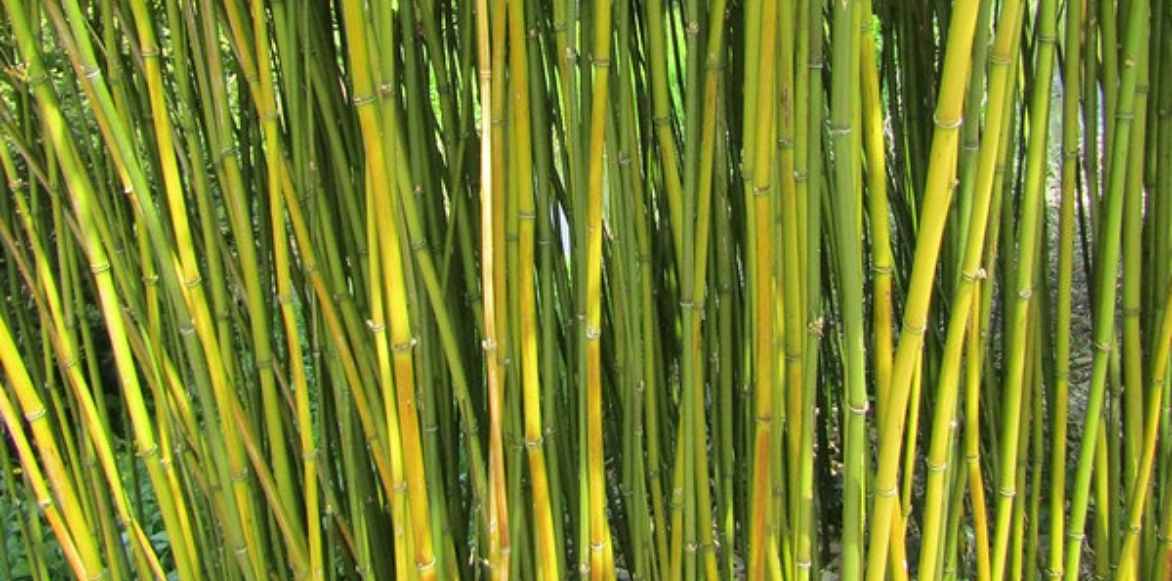
Semiarundinaria ‘Yamadori’ (© Leonora Enking)
Pruning and Maintenance
Watering
Bamboo requires a lot of water to establish and grow. Water generously at planting and then very regularly for the first two years of cultivation, especially in summer and when the soil is very dry. Don’t forget to apply mulch to keep the soil cool. Over time, bamboos “mulch themselves” thanks to their dry leaves, which decompose very slowly. After the first two years of cultivation, semiarundinarias tolerate drought well.
Potted specimens require even more careful monitoring of watering: do not let the soil dry out too much between waterings. Each semiarundinaria plant can drink up to 5 litres per day during periods of intense heat.
Maintenance
Bamboos thrive in rich soil. Each spring, an application of compost at the base of the canes will be beneficial. For bamboos grown in pots or containers, a special bamboo fertiliser, rich in nitrogen, can be applied twice a year.
If the leaves of bambusas start to yellow, this may indicate an excess of lime in the soil. In this case, adding a little ericaceous compost to the surface or a mulch of pine needles should solve the problem.
Pruning
Every year, cut back dry culms to the base (the dry canes can be used as stakes or for creating decorative fencing), the least vigorous and the most troublesome. All these pruned canes will not regrow, but this maintenance pruning will allow the plant to develop entirely new foliage that is denser. The appearance of the bamboo will be greatly improved.
Propagation of medium bamboo
Propagation of medium-sized bamboos is best done in spring (March-April), by dividing clumps that are at least three years old. The operation should be carried out when the soil is sufficiently moist, which makes the process easier.
Dividing the clump:
- Using a sharp spade, take a good-sized clump from the edge of the main clump, ensuring it has at least 3 to 5 culms;
- Shorten the culms by one-third of their length, always retaining some foliage, otherwise the clumps will not recover;
- Plant the clump in a hole enriched with good compost;
- Backfill the hole with the excavated soil, firm it down, and mulch;
- Water generously to eliminate air pockets between the soil and the rootstocks, then keep the soil moist but never waterlogged;
- Spray the foliage regularly with non-calcareous water during dry or windy weather, either in the evening or morning. This will prevent the leaves from drying out and ensure good recovery.
Please note: once removed, large bamboos revert to their juvenile stage. The new culms that emerge will be smaller in size and diameter. It will take several years before they regain the dimensions of the parent plant.
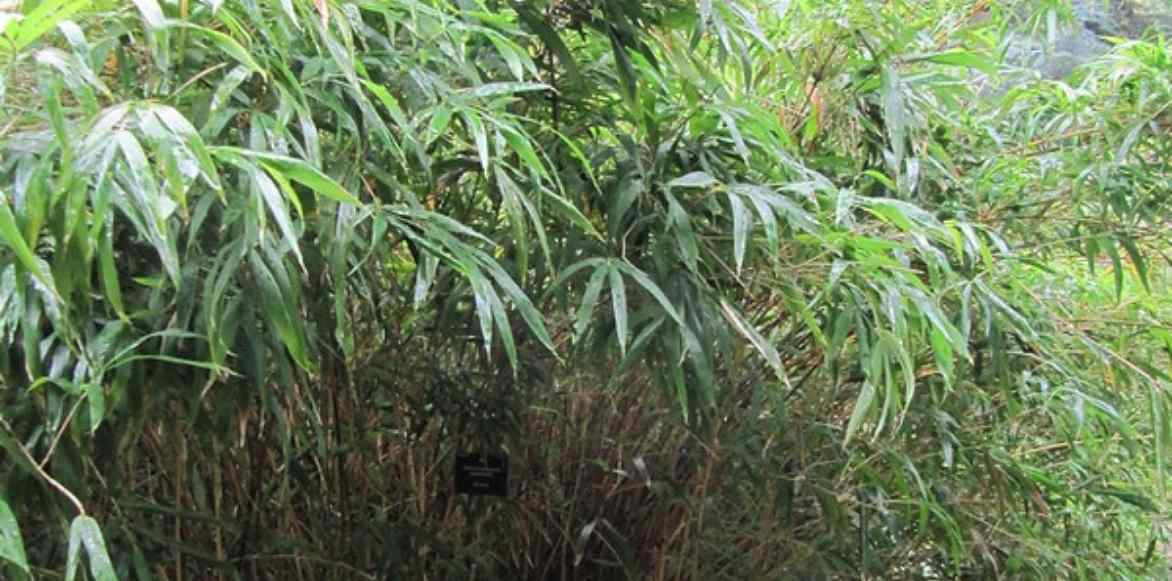
Semiarundinaria Yashadake ‘Kimmei’ (© Leonora Enking)
Pests and Diseases
Bamboos are resistant to most diseases and parasites. However, they can become vulnerable when weakened by excess water or a lack of nutrients.
When the weather is hot and humid, bamboos grown in pots are sometimes prone to attacks by mealybugs, which feed on the sap and leave white, farinose or cottony clusters on the plant. The leaves turn yellow and then fall off, which can lead to the death of the plant in severe infestations. Spraying a mixture of vegetable oil (rapeseed or olive oil), 90° alcohol, and black soap can suffocate them.
Red spider mites can also cause yellowing and drying of the leaves of potted bamboos, which eventually fall off. In this case, there are various eco-friendly solutions presented in the advice sheet Red Spider Mite: Identification and Treatment.
→ Want to learn more about bamboo diseases and parasites? Read our advice sheet Bamboo Diseases and Parasites
How to pair Noble Bamboo?
The Noble Bamboo, with its density, evergreen foliage, and wind resistance, is ideal for creating compact hedges.
However, medium-sized Bamboo can also be planted in the garden as a standalone clump. To reflect its Asian origins, you can pair it with plants from the same continent that thrive under similar growing conditions.
For trees, consider a beautiful Cornus kousa ‘Satomi’, a classic among flowering dogwoods, with its stunning pink bracts in spring. To contrast the Bamboo’s foliage in shape and colour, the Cercidiphyllum japonicum ‘Glowball’ or caramel tree is a magnificent deciduous tree, prized for its heart-shaped leaves with changing hues and the caramel scent its leaves emit when they fall in autumn (or when they suffer a late spring frost…).
More exotic but still from the same region, the Chinese Windmill Palm (Trachycarpus fortunei), a very hardy palm, will add a striking graphic touch to the ensemble. For ground cover, Japanese Forest Grass (Hakonechloa macra ‘Aureola’) will subtly echo the Bamboo’s foliage.
Alternatively, don’t hesitate to play with graphic contrasts by pairing the Bamboo’s upright canes and lanceolate leaves with plants that are wider than tall, with softer curves and broader leaves… Colour harmony is also important: subtle echoes of the purple tones in the Semiarundinaria canes, through flowers or foliage in similar shades, will please the eye. Finally, don’t feel constrained by the rigid “Japanese-style” garden. Let loose! No one is forcing you to plant Bamboo alongside other Asian plants. Be creative while respecting the basic needs of your chosen plants, Bamboo or otherwise.
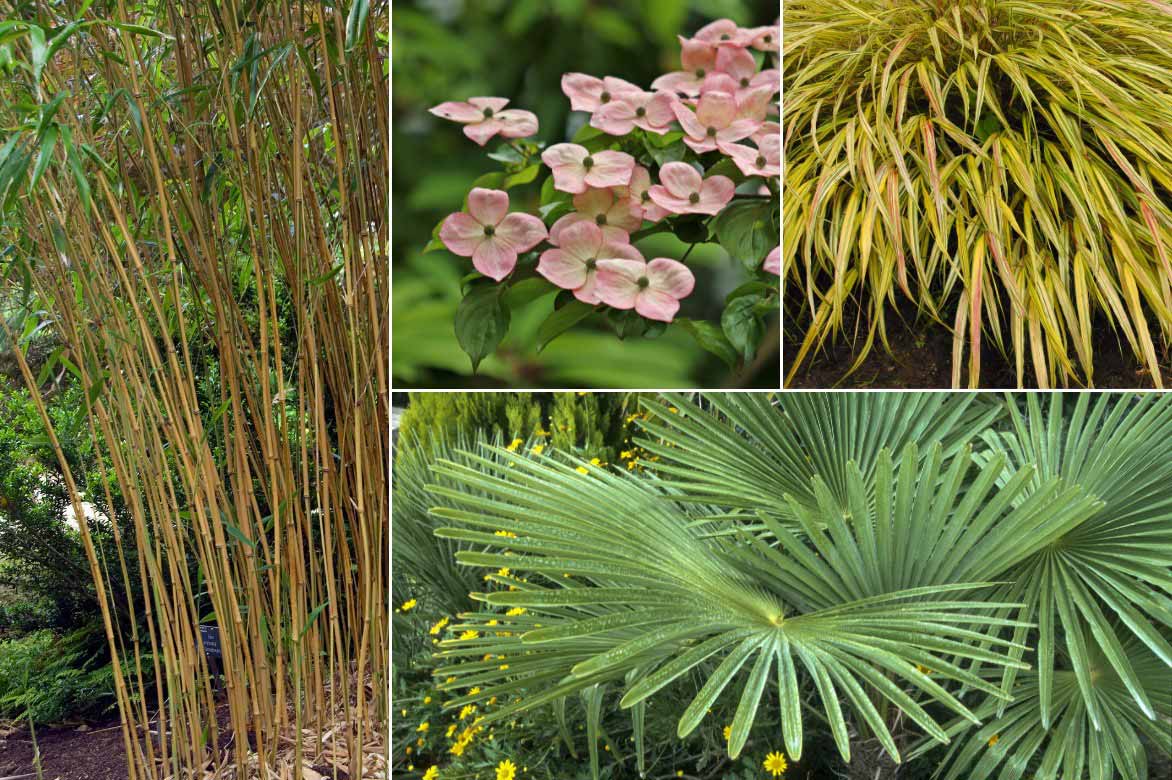
Semiarundinaria yashadake ‘Kimmei’, Cornus kousa ‘Satomi’, Hakonechloa macra ‘Aureola’, and Trachycarpus fortunei
Also read
- Unsure about planting bamboo in your garden? Read Michael’s article: Should You Plant Bamboo in Your Garden?
- Semiarundinarias aren’t the only bamboos with colourful culms: here are 6 other bamboos with colourful culms.
- How did bamboo arrive in our gardens? Discover the whole story with Sophie in Travelling Plants: Bamboo.
→ Find all our Noble Bamboos or Semiarundinarias in our online nursery.
- Subscribe!
- Contents
































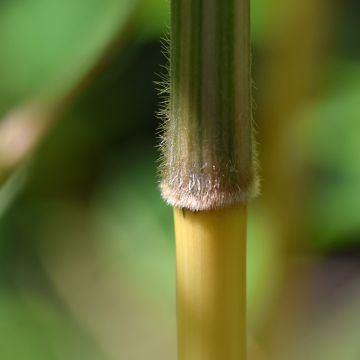


Comments